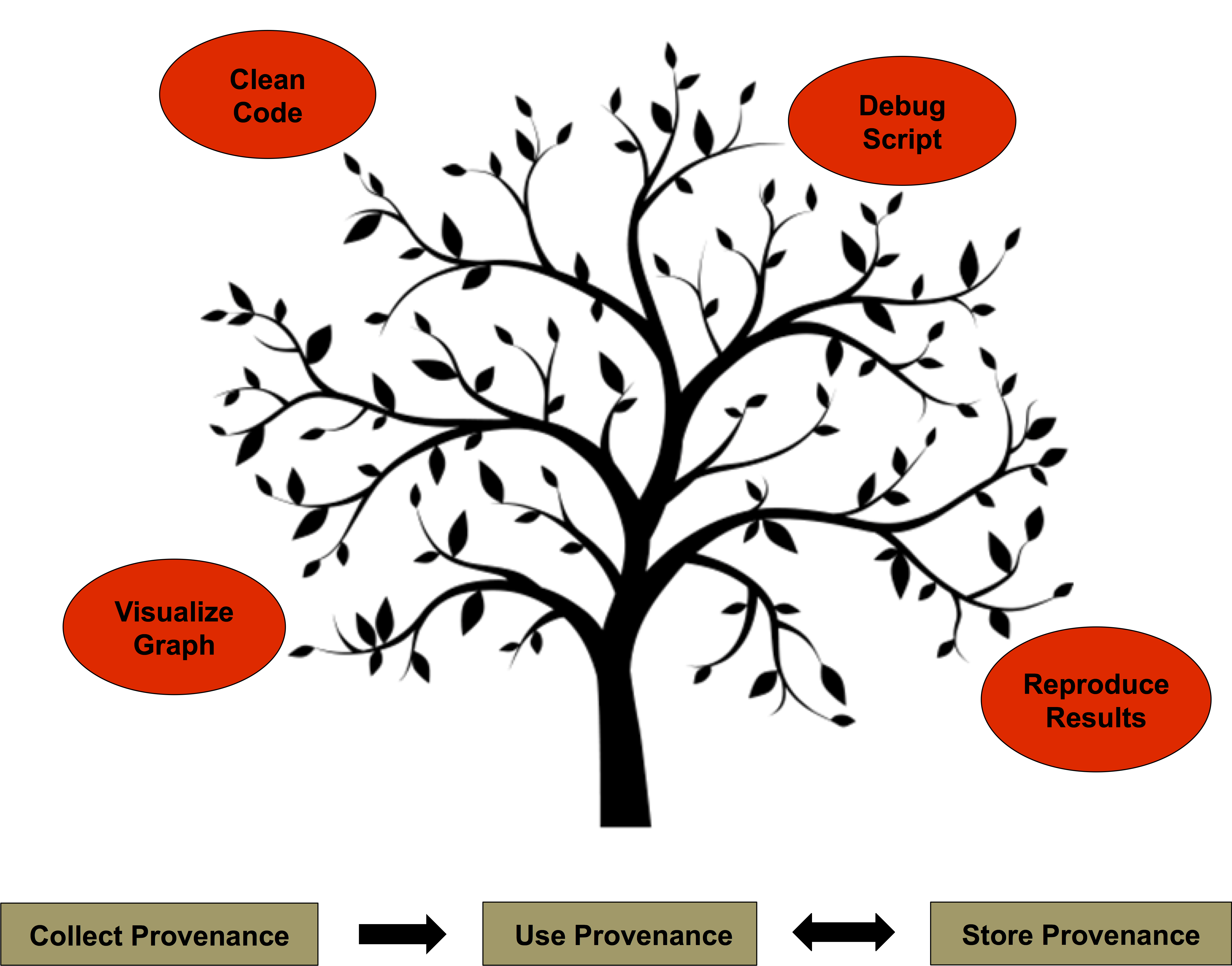Capturing and Using Scientific Data Provenance
Barbara Lerner
Elizabeth Fong
Mount Holyoke College
|
Emery Boose
Aaron Ellison
Harvard Forest
|
Margo Seltzer
University of British Columbia
|
Thomas Pasquier
University of Bristol
|
Joe Wonsil
Carthage College
|
Orenna Brand
Columbia University
|
Tools that Use Provenacne
 In this project, we have focused on the collection of provenance from
R scripts using a tool called RDataTracker. The collected provenance
consists of an execution history of the script, including intermediate
data values, copies of scripts used, as well as input and
output files and plots created. This information is stored in the
file system for later use.
In this project, we have focused on the collection of provenance from
R scripts using a tool called RDataTracker. The collected provenance
consists of an execution history of the script, including intermediate
data values, copies of scripts used, as well as input and
output files and plots created. This information is stored in the
file system for later use.
The main focus of our current research is thinking beyond
provenance as purely archival data. How can scientists leverage
provenance to improve the science?
Understanding and debugging scripts
Provenance can help a scientist understand how a script is behaving.
Using this knowledge, the scientist can determine what is causing a
script to produce incorrect output, or to convince the scientist that
the behavior is correct.
One tool to help understand script behavior
is provViz,
a visualizer that
allows the scientist to see which lines of code were executed,
variable values before and after those lines are executed, and saved
copies of input and output files and graphs.
Another tool that allows a scientist to gain a better understanding of
their script's behavior is provDebugR.
provDebugR is a time-travelling debugger. It allows the user to
examine the state of the variables in their script at different points
of execution, after the script has completed execution. It provides
access to the same information as provViz, but with a user interface
that is familiar to anyone used to using a debugger. With this tool a
script can be debugged by running it once and examining the collected
provenance, rather than setting breakpoints, inserting print
statements, and running the script multiple times.
Reproducing script execution
An important problem in science is the need for reproducibility.
While this is clearly evident in experiments that require the
collection and measurement of physical artifacts, it is also a problem
for reproducing results from data analysis. Having the data and
script is not necessarily sufficient to be able to reproduce the
results. Libraries that a script depends on may change, the language
implementation may change, the platform on which the script is
executed might change. Any of these changes can result in the script
no longer producing the same
result. Encapsulator is a tool that
builds a virtual machine that encapsulates the script, its data, and the
libraries it uses into a virtual machine that can be re-run to produce
the exact result. An encapsulated script could be associated with a
publication, giving scientists the opportunity to verify and build on
each other's analytic work in a very concrete way.
Cleaning script code
Scientists often build scripts in an exploratory way. They may write
some code to read data, do some analysis and produce a plot. They
will then study the plot and develop more questions which they answer
by writing more code, producing more plots, etc. In the end, they may
want to write a paper or share code that is based on only some of the
output plots. It can be a tedious and error-prone process to manually
disentangle the code and be left with just the code that produced the
most valuable results. Rclean uses
provenance to identify which lines of code were used to produce the
output of interest. It then extracts those lines of code from the
original script, producing a cleaned version of the code.
 In this project, we have focused on the collection of provenance from
R scripts using a tool called RDataTracker. The collected provenance
consists of an execution history of the script, including intermediate
data values, copies of scripts used, as well as input and
output files and plots created. This information is stored in the
file system for later use.
In this project, we have focused on the collection of provenance from
R scripts using a tool called RDataTracker. The collected provenance
consists of an execution history of the script, including intermediate
data values, copies of scripts used, as well as input and
output files and plots created. This information is stored in the
file system for later use.